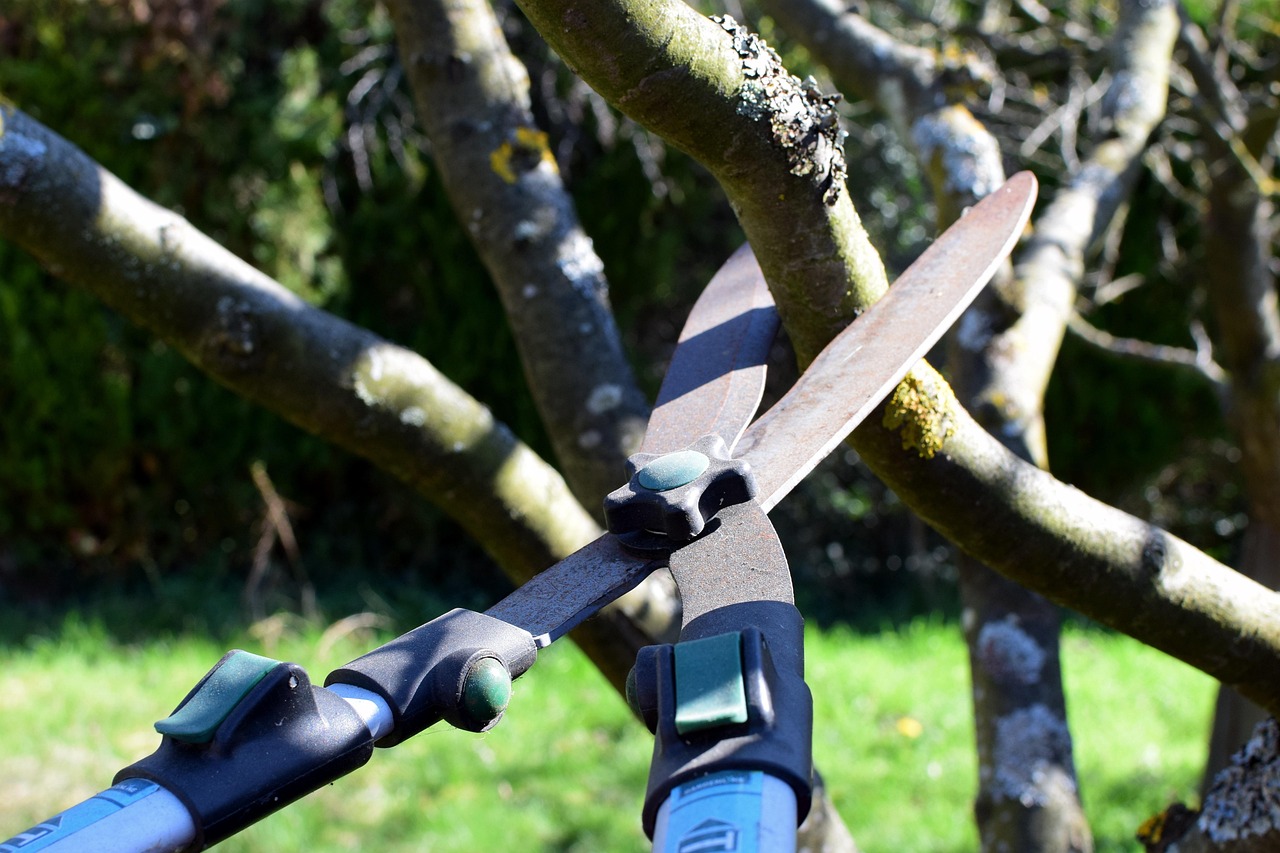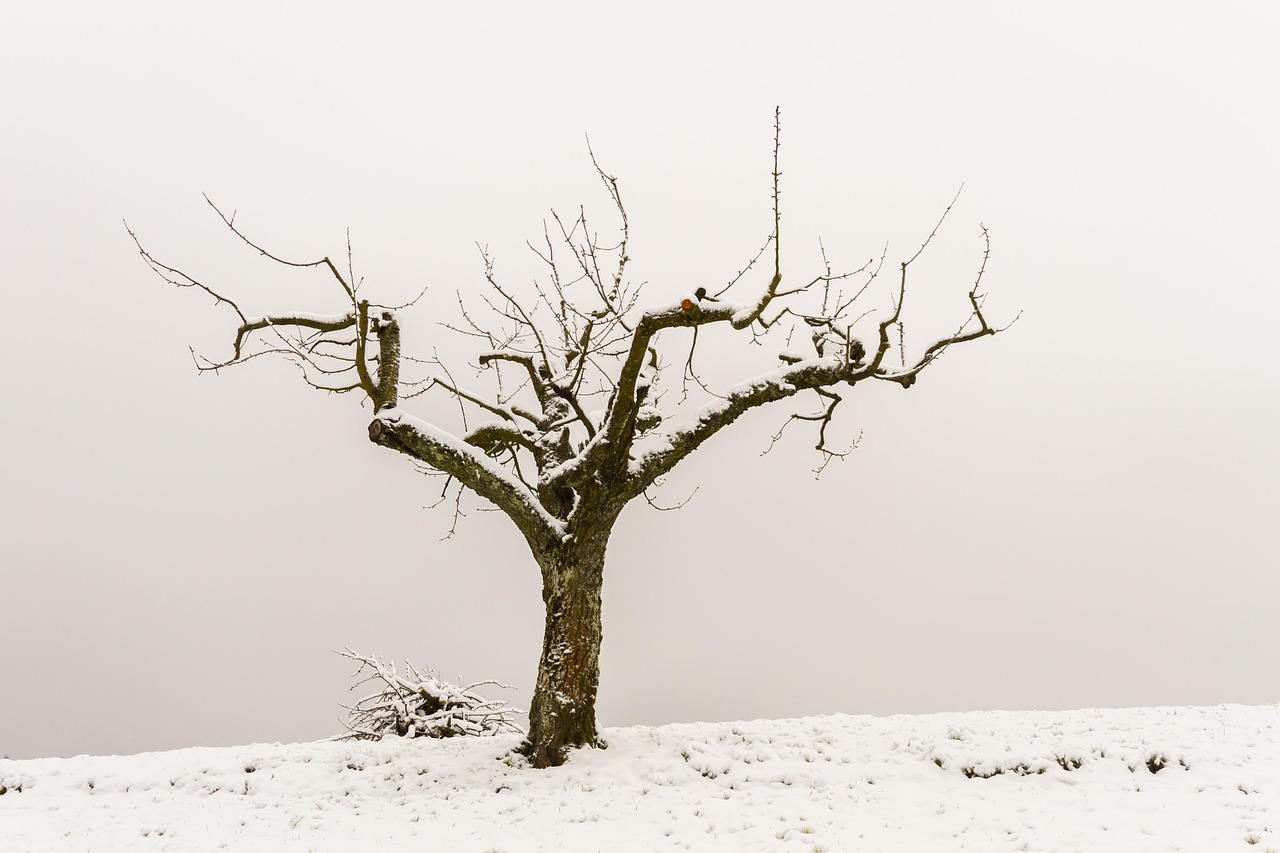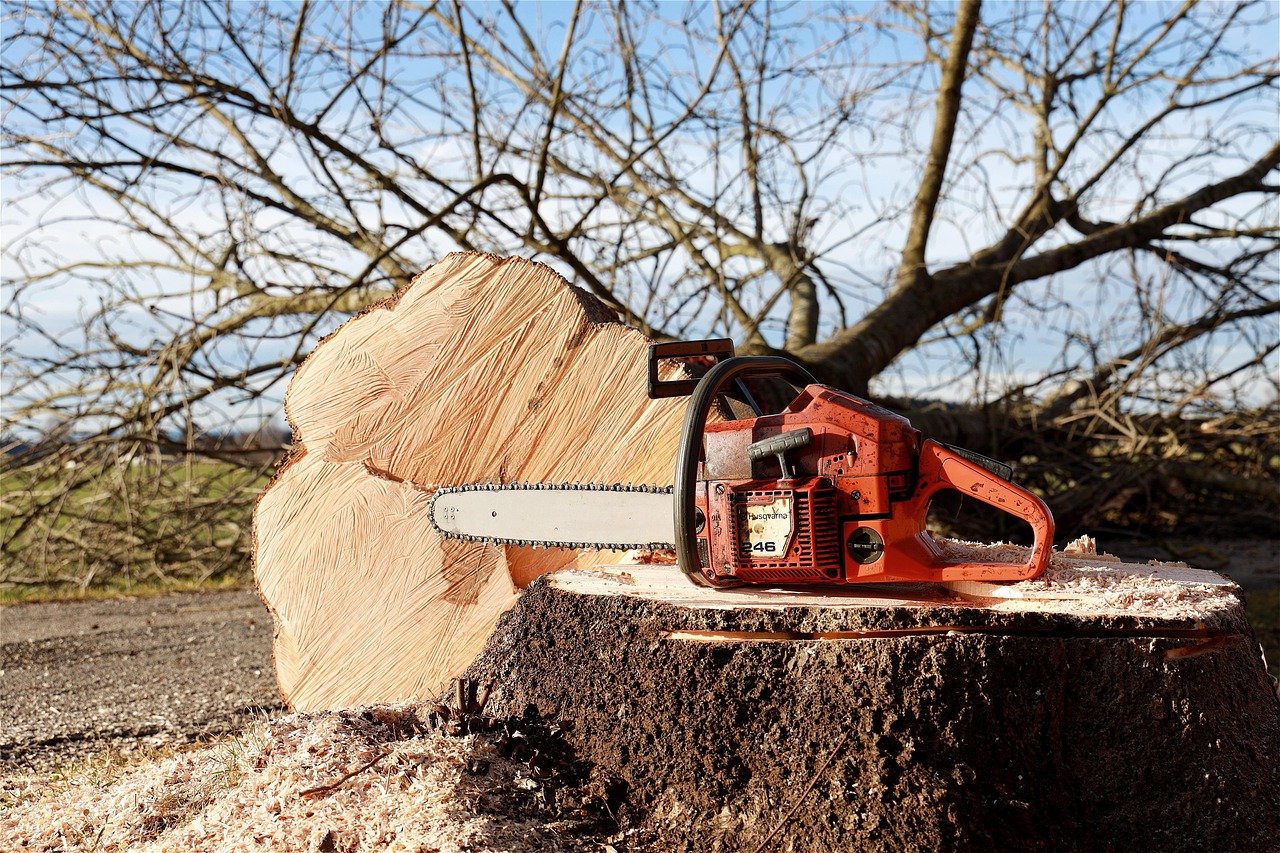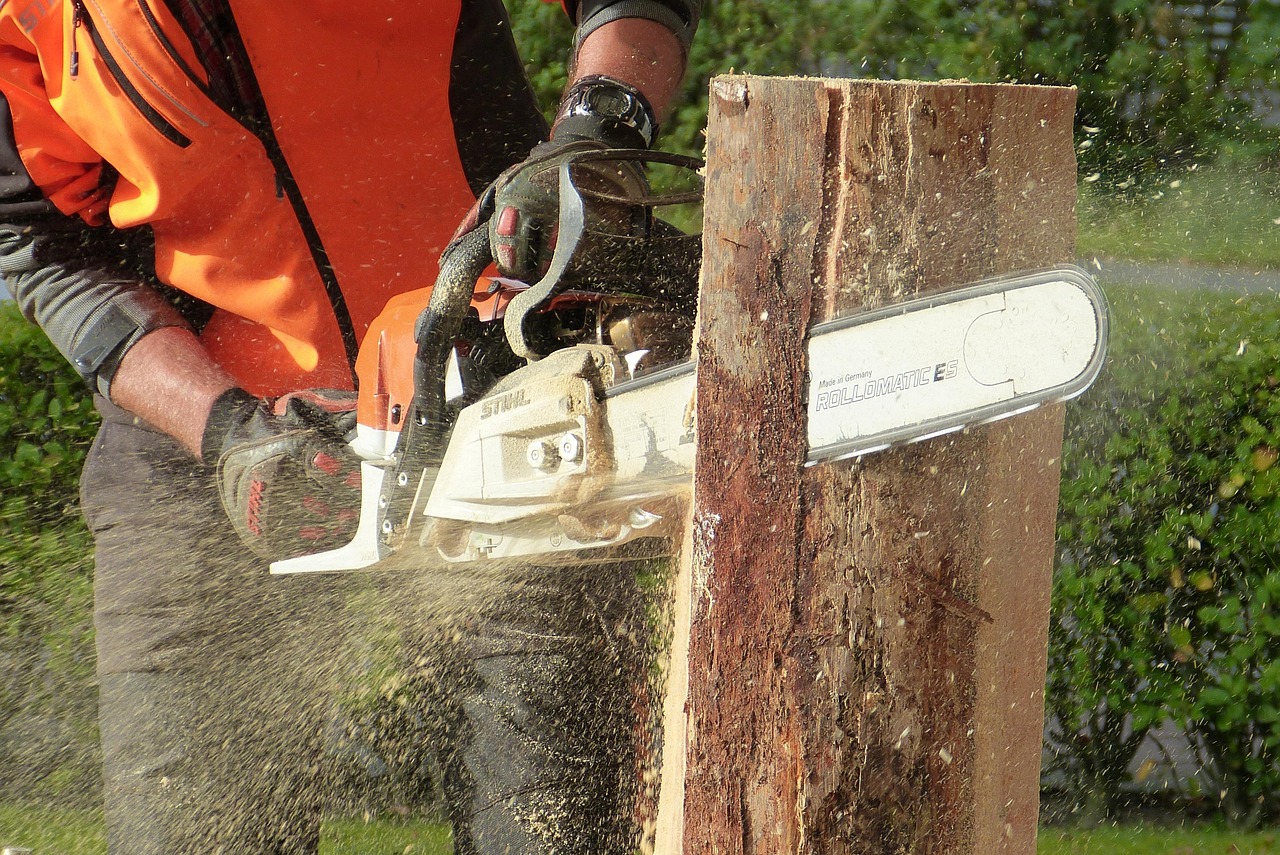Pruning smoke trees is essential for maintaining their ornamental appeal. Proper techniques enhance their natural beauty, promote healthy growth, and improve flowering. Regular pruning helps control size and shape while preventing diseases.
The smoke tree, or Cotinus coggygria, is a stunning deciduous shrub known for its unique and dramatic foliage. Originating from southern Europe and Asia, it features striking purple or green leaves and fluffy, smoke-like flower clusters that bloom in summer. These characteristics make smoke trees a popular choice for gardens and landscapes. However, to keep them looking their best, regular pruning is necessary.

Understanding the right time and method for pruning is crucial. Pruning not only shapes the plant but also encourages new growth and improves air circulation. This can prevent issues like mold and pests. Smoke trees can grow quite large if left unpruned. Therefore, it is essential to manage their size by cutting back overgrown branches.
Benefits of Pruning Smoke Trees
Pruning offers several benefits that contribute to the overall health and aesthetics of the smoke tree. Here are some key advantages:
- Enhances Aesthetic Appeal: By shaping the tree, pruning allows for a more visually pleasing form.
- Encourages Healthy Growth: Cutting back dead or diseased branches promotes stronger new growth.
- Improves Air Circulation: Thinning out dense areas helps to prevent diseases and pest infestations.
- Increases Flower Production: Proper pruning can lead to more abundant flowering in the growing season.
When pruned correctly, smoke trees can showcase their unique features more prominently. The fluffy flower clusters are a signature look that can be accentuated through thoughtful trimming. Moreover, managing the size of the tree ensures that it fits well within its space in a garden or yard.

Best Time to Prune Smoke Trees
The timing of your pruning is as important as the technique itself. For smoke trees, late winter or early spring is typically the best time to prune. This timing coincides with their dormant period when the tree is less susceptible to stress from cutting. Here are some specific guidelines:
- Late Winter: Pruning during this time allows you to assess the tree’s shape without foliage obstructing your view.
- Early Spring: Just before new growth begins is ideal, as it encourages healthier blooms.
Avoid pruning in late fall or early winter as this can expose the tree to harsh winter conditions. Additionally, pruning during these times may remove buds that would have produced flowers in the spring.
Basic Pruning Techniques
Pruning smoke trees involves several techniques that ensure effective results. Understanding these methods can make a big difference in how well your tree thrives.

- Remove Dead or Diseased Wood: Start by cutting away any branches that appear dead, damaged, or diseased. This prevents further issues.
- Thin Out Dense Areas: If branches are crowding each other, selectively remove some to improve light exposure and air circulation.
- Shape the Tree: Trim back longer branches to create a balanced shape. Aim for a pleasing silhouette that highlights its natural form.
- Cut Back New Growth: For younger trees, cutting back new growth encourages bushier growth and enhances flowering.
Using sharp, clean tools is essential for effective pruning. Dull or dirty tools can cause unnecessary damage to the tree and lead to infections. It is advisable to disinfect cuts with rubbing alcohol to prevent disease transmission.
Tools Needed for Pruning
Having the right tools can make the pruning process smoother and more efficient. Here are some essential tools for pruning smoke trees:
| Tool | Description |
|---|---|
| Pruning Shears | Used for small branches and fine cuts. |
| Loppers | Good for thicker branches that require more leverage. |
| Saw | A pruning saw is ideal for larger branches that cannot be cut with shears or loppers. |
| Gloves | Protects your hands from thorns and sharp edges. |
By using the correct tools and techniques, you can ensure that your smoke tree remains healthy and vibrant throughout its growing season. Pruning not only contributes to its ornamental appeal but also enhances its longevity in your landscape design.

Common Mistakes in Pruning Smoke Trees
Even experienced gardeners can make mistakes when pruning smoke trees. Recognizing these common pitfalls can help you achieve better results and maintain the health of your tree. Here are some frequent errors to avoid:
- Pruning at the Wrong Time: Cutting back branches during the fall or winter can remove essential buds.
- Over-Pruning: Removing too much foliage can stress the tree, leading to poor recovery.
- Neglecting to Disinfect Tools: Not cleaning pruning tools can spread diseases between plants.
- Ignoring Tree Shape: Failing to maintain a balanced shape can result in unsightly growth.
Avoiding these common mistakes will ensure that your smoke tree remains healthy and continues to thrive. Maintaining awareness while pruning can lead to a more rewarding gardening experience.
Seasonal Care for Smoke Trees
In addition to pruning, seasonal care is essential for maintaining the health and beauty of your smoke tree. Each season presents unique challenges and opportunities for care. Here’s how to care for your smoke tree throughout the year:
Spring Care
Spring is a crucial time for your smoke tree as it begins its growth cycle. Here are some key tasks to consider:
- Monitor New Growth: Assess the health of new shoots and leaves.
- Fertilize: Apply a balanced fertilizer to promote vigorous growth.
- Mulch: Add a layer of mulch around the base to retain moisture and suppress weeds.
Summer Care
During the summer months, keeping your smoke tree hydrated is vital. Here are some care tips:
- Water Regularly: Ensure that the tree receives adequate water, especially during dry spells.
- Inspect for Pests: Check for common pests like aphids or spider mites and manage them promptly.
- Deadhead Flowers: Remove spent flowers to encourage further blooming and maintain appearance.
Fall Care
As the weather cools down, different care practices become important:
- Prepare for Winter: If your area experiences harsh winters, consider protecting the base of the tree with mulch.
- Limit Watering: Reduce watering as the tree enters dormancy.
- Check for Diseases: Inspect the tree for any signs of disease or stress.
Winter Care
Winter can be tough on smoke trees. Here’s how to help them survive:
- Avoid Heavy Snow Accumulation: If necessary, gently brush off snow from branches to prevent breakage.
- Monitor Temperature Fluctuations: Protect young trees from extreme cold with burlap wraps or protective barriers.
Pest and Disease Management
Smoke trees are generally hardy but may face issues from pests and diseases. Understanding how to identify and manage these problems is key to maintaining plant health. Here are some common pests and diseases that may affect smoke trees:
Pests
- Aphids: These small insects suck sap from leaves, causing curling and discoloration. Use insecticidal soap for control.
- Spider Mites: They thrive in dry conditions, leading to stippled leaves. Increase humidity or use miticides as needed.
- Caterpillars: These pests can defoliate branches quickly. Handpick or use organic pesticides to manage them.
Diseases
- Canker Disease: This disease causes sunken areas on branches. Prune affected areas immediately to prevent spread.
- Powdery Mildew: A fungal issue that appears as a white coating on leaves. Improve air circulation and use fungicides if necessary.
Regular monitoring and prompt action are essential for managing pests and diseases effectively. By staying vigilant, you can protect your smoke tree from harm.
Your Smoke Tree’s Environment
The environment in which your smoke tree grows plays a significant role in its overall health and appearance. Understanding these environmental factors is essential for successful cultivation:
Soil Conditions
A well-draining soil is critical for smoke trees. They prefer slightly acidic to neutral soils with good organic matter content. Here are some soil tips:
- Avoid Waterlogging: Ensure proper drainage to prevent root rot.
- Add Organic Matter: Incorporate compost to improve soil structure and fertility.
Sunlight Requirements
Smoke trees thrive in full sun, which promotes their vibrant foliage and flowering. Aim for at least six hours of direct sunlight daily. However, they can tolerate partial shade, although their growth may be less vigorous.
Space Considerations
These trees can grow quite large, so it’s essential to provide enough space for them to flourish. When planting, consider the following guidelines:
- Avoid Crowding: Space smoke trees at least 10-15 feet apart from other plants.
- Avoid Planting Near Structures: Ensure that trees are not too close to buildings or fences to allow for natural growth.
Caring for your smoke tree involves understanding its needs and addressing them accordingly. By providing the right environment, you set the stage for a healthy, beautiful ornamental feature in your landscape.
Choosing the Right Varieties of Smoke Trees
When selecting a smoke tree for your landscape, it is important to consider the different varieties available. Each type has unique characteristics that can influence its appearance, growth habits, and suitability for your garden. Here are some popular varieties of smoke trees:
Cotinus coggygria ‘Royal Purple’
This variety is famed for its deep purple foliage, which creates a striking contrast in any garden setting. In the summer, it produces fluffy pink flower clusters that resemble smoke, adding to its ornamental appeal.
Cotinus coggygria ‘Golden Spirit’
With bright golden-yellow leaves, this variety stands out in the landscape. It thrives in full sun and offers a vibrant addition to any garden, particularly during the fall when its leaves turn orange and red.
Cotinus obovatus (American Smoke Tree)
This native variety features a more tree-like form and produces larger flower clusters. It is well-suited for larger landscapes and provides excellent wildlife habitat.
Understanding the specific traits of each variety can help you select the best smoke tree to enhance your garden’s aesthetic. Consider the color, growth habit, and size when making your choice.
Propagation Techniques for Smoke Trees
Once you have selected your smoke tree variety, you may want to propagate it to create new plants. There are several effective methods for propagating smoke trees:
Seed Propagation
Growing smoke trees from seeds is a rewarding method but requires patience. Follow these steps for success:
- Collect Seeds: Gather seeds in late summer or early fall once they have turned brown.
- Prepare Seeds: Soak seeds in warm water for 24 hours to soften their hard coats.
- Plant Seeds: Sow seeds in seed trays filled with potting mix. Cover lightly with soil.
- Water and Maintain: Keep the soil moist and place trays in a warm area with indirect sunlight.
Seeds may take several weeks to germinate, so be patient and monitor moisture levels.
Cuttings Propagation
Taking cuttings is a quicker way to propagate smoke trees. Here’s how to do it:
- Select Healthy Shoots: Choose healthy, non-flowering shoots from the current year’s growth.
- Cut and Prepare: Cut the shoot just below a leaf node. Remove the lower leaves to reduce moisture loss.
- Dip in Rooting Hormone: Optional, but dipping the cut end in rooting hormone can improve success rates.
- Plant Cuttings: Insert the cut end into a pot filled with moist potting mix. Water gently.
- Create Humidity: Cover the pot with a plastic bag or dome to retain moisture until roots develop.
Keep the cuttings in bright, indirect light and maintain humidity until roots are established, typically within a few weeks.
Enhancing Ornamental Appeal with Companion Plants
The beauty of a smoke tree can be further enhanced by pairing it with suitable companion plants. Selecting plants that complement its foliage and flowers can create a stunning visual display. Here are some great options:
Low-Growing Perennials
Consider planting low-growing perennials around the base of your smoke tree. Some excellent choices include:
- Daylilies: Their vibrant blooms contrast beautifully with the foliage of smoke trees.
- Hostas: These shade-tolerant plants provide lush greenery that pairs well with the dramatic look of smoke trees.
Flowering Shrubs
Add flowering shrubs to create layers in your garden design. Some suitable options are:
- Hydrangeas: Their large flower clusters can provide a lovely backdrop to the delicate blooms of smoke trees.
- Spireas: These shrubs produce abundant blooms that complement the smoke tree’s unique flowers.
Grasses and Foliage Plants
Incorporating ornamental grasses can add movement and texture to your landscape. Consider:
- Pennisetum (Fountain Grass): Its soft plumes create a nice contrast against the dense foliage of smoke trees.
- Lamb’s Ear: This low-growing plant adds silvery foliage that can enhance the overall aesthetic.
By carefully selecting companion plants, you can create a cohesive and visually appealing landscape around your smoke tree. The right combinations will enhance their beauty while contributing to a thriving garden ecosystem.
Caring for Mature Smoke Trees
Mature smoke trees require specific care to ensure they remain healthy and beautiful as they age. Here are some important considerations for caring for mature specimens:
Watering Needs
Mature smoke trees are relatively drought-tolerant, but they still need regular watering during dry periods. Here are some tips:
- Adequate Watering: Water deeply once a week during extended dry spells to encourage deep root growth.
- Avoid Overwatering: Ensure that the soil drains well to prevent root rot.
Nutrient Management
As trees mature, their nutrient needs may change. Regularly check soil nutrient levels and consider:
- Annual Fertilization: Apply a balanced fertilizer in early spring to support healthy growth.
- Soil Testing: Conduct soil tests every few years to adjust fertilization based on nutrient levels.
Pest Control
Mature smoke trees may still face pest threats. Regular monitoring is essential. Here’s how to manage pests effectively:
- Regular Inspections: Frequently check for signs of pests or disease and address issues promptly.
- Use Organic Solutions: Whenever possible, choose organic pest control methods to protect beneficial insects.
Caring for mature smoke trees involves understanding their changing needs and addressing them appropriately. With proper attention, these trees can thrive for many years, providing beauty and interest in your landscape.
Advanced Pruning Techniques
As you become more experienced with pruning smoke trees, you may want to explore advanced techniques that can enhance their beauty and health. These methods require a bit more skill and attention but can yield impressive results.
Crown Thinning
Crown thinning involves selectively removing branches within the tree’s crown to improve air circulation and light penetration. This technique is particularly beneficial for smoke trees that have dense foliage. Here’s how to do it:
- Select Branches: Identify branches that are crossing, crowded, or growing inward toward the center of the tree.
- Cut Strategically: Use pruning shears to remove these branches at their base, making clean cuts to minimize stress on the tree.
- Maintain Balance: Ensure you maintain a balanced shape while thinning to preserve the overall aesthetic.
Pollarding
Pollarding is an extreme form of pruning where the tree is cut back drastically to promote new growth. While this technique is not common for smoke trees, it can be used if you want to control size significantly:
- Choose Timing: Perform pollarding in late winter when the tree is dormant.
- Cut Back Significantly: Cut back the previous year’s growth to a few inches above the main trunk or branches.
- Encourage New Growth: This will result in a burst of new shoots, creating a bushy appearance.
Keep in mind that pollarding requires ongoing maintenance as new growth can become unruly. Regularly trim back these new shoots to maintain the desired shape.
Enhancing Seasonal Color
One of the most attractive features of smoke trees is their seasonal color changes. To enhance these seasonal variations, consider planting with seasonal color in mind. Here are some suggestions:
Spring Color
In spring, complement the smoke tree’s fresh foliage with early bloomers such as:
- Creeping Phlox: Its vibrant colors create a beautiful contrast with the emerging leaves of smoke trees.
- Bleeding Heart: This perennial adds delicate pink flowers that can soften the look of your landscape.
Summer Color
During summer, the fluffy flower clusters of smoke trees take center stage. Enhance this with:
- Daylilies: Their bright blooms can create a lively atmosphere around your smoke tree.
- Salvia: These drought-tolerant plants attract pollinators and add vibrant colors.
Fall Color
As autumn approaches, the foliage of smoke trees can turn brilliant shades. Enhance this seasonal display with:
- Asters: Their purple hues can harmonize beautifully with the fall colors of smoke trees.
- Goldenrods: These late bloomers add golden tones that complement the autumn palette.
Community and Environmental Benefits
Beyond their ornamental value, smoke trees provide several community and environmental benefits. Understanding these can enhance your appreciation for this unique plant:
Wildlife Habitat
Smoke trees attract various wildlife species, serving as a habitat for birds and beneficial insects. The flowers produce nectar that draws pollinators like bees and butterflies, while the dense foliage offers shelter for small animals.
Erosion Control
The root system of smoke trees helps stabilize soil, reducing erosion in areas prone to runoff. This makes them an excellent choice for planting on slopes or near water bodies.
Aesthetic Value in Urban Settings
In urban landscapes, smoke trees can act as focal points in parks and public gardens, contributing to the overall aesthetic appeal. Their unique appearance draws attention and enhances community spaces.
Conclusion
Caring for smoke trees involves understanding their unique characteristics and needs. From proper pruning techniques to seasonal care, each aspect contributes to the health and beauty of these remarkable plants. By choosing suitable varieties, employing advanced pruning methods, and pairing them with complementary plants, you can create a stunning landscape that thrives throughout the seasons.
Moreover, smoke trees not only enhance ornamental appeal but also provide essential benefits to wildlife and the environment. Their resilience and adaptability make them an excellent choice for gardeners looking to create a vibrant and sustainable outdoor space. With consistent care and attention, your smoke tree will become an enduring feature that brings joy and beauty for years to come.
By following this comprehensive guide, you can ensure that your smoke tree remains a highlight of your garden, showcasing its ornamental appeal throughout its life cycle.
